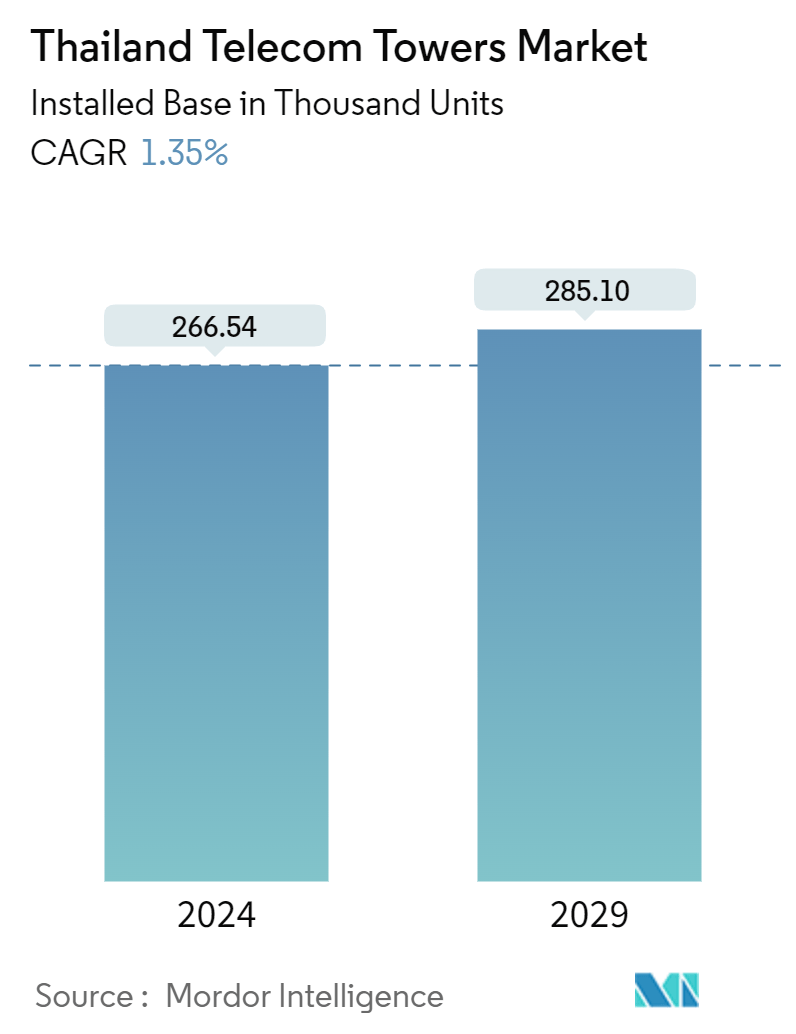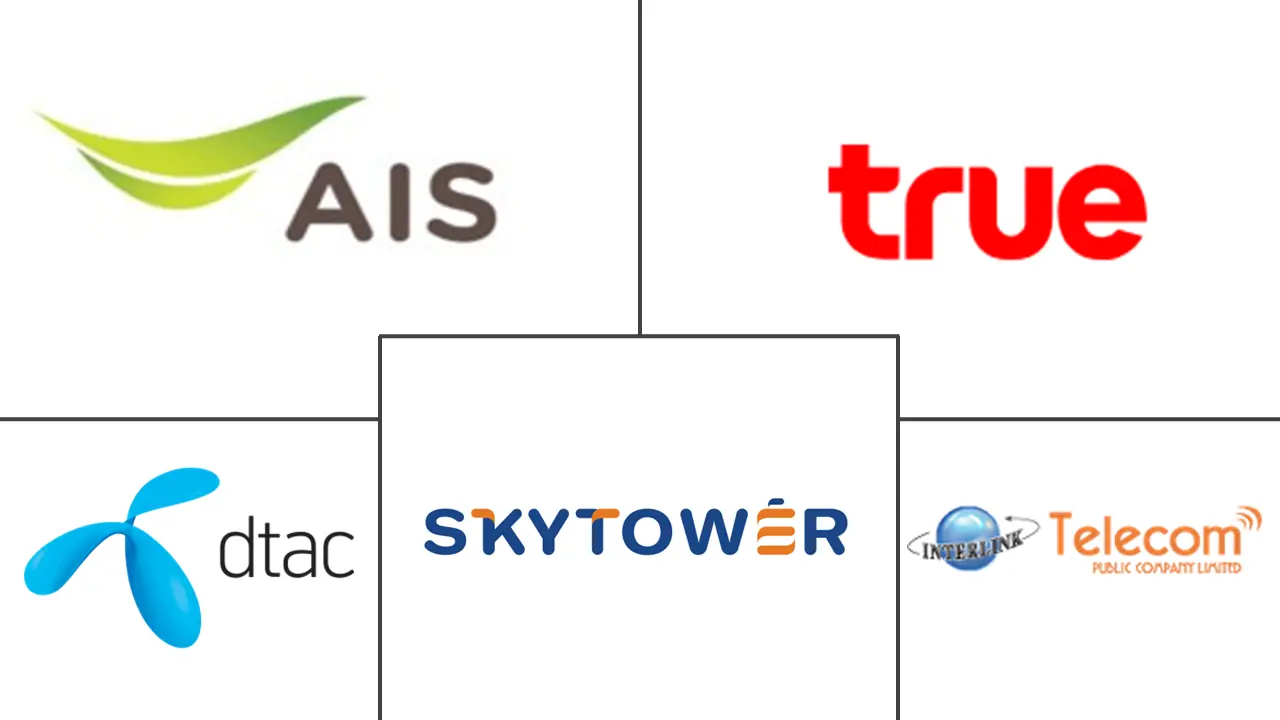Market Size of Thailand Telecom Towers Industry

| Study Period | 2019 - 2029 |
| Base Year For Estimation | 2023 |
| Forecast Data Period | 2024 - 2029 |
| Historical Data Period | 2019 - 2022 |
| CAGR (2024 - 2029) | 1.35 % |
| Market Concentration | Medium |
Major Players
*Disclaimer: Major Players sorted in no particular order |
Need a report that reflects how COVID-19 has impacted this market and its growth?
Thailand Telecom Towers Market Analysis
The Thailand Telecom Towers Market size in terms of installed base is expected to grow from 266.54 Thousand units in 2024 to 285.10 Thousand units by 2029, at a CAGR of 1.35% during the forecast period (2024-2029).
- The telecom towers market in Thailand has witnessed significant growth over the past decade due to increasing mobile penetration, rapid urbanization, and the expansion of 4G and 5G networks. Thailand’s telecom sector is dominated by major players like Advanced Info Service (AIS), True Corporation, and Total Access Communication (DTAC), among others, which have aggressively expanded their tower infrastructure to meet the growing demand for better connectivity. With more than 100 million mobile subscriptions surpassing the country’s population, the need for extensive tower infrastructure has become crucial to ensure coverage and capacity.
- One of the key drivers of this growth is the surge in data consumption, especially in urban areas. The rise of mobile broadband and the demand for high-speed internet have pushed telecom operators to invest heavily in upgrading their networks. The adoption of 5G technology is expected to further accelerate this trend, with telecom operators actively pursuing network densification and expanding their tower portfolios to meet the higher frequency and shorter range of 5G signals. The government is also supporting the rollout of 5G through the allocation of spectrum and regulatory support.
- Rural areas have also seen considerable development in telecom infrastructure. The government’s Universal Service Obligation (USO) fund has played a pivotal role in extending telecom services to underserved areas. This initiative, along with investments from private telecom operators, has facilitated the installation of telecom towers in remote regions, improving connectivity for rural populations.
- The Thai government envisions transforming Thailand into a digital infrastructure hub for ASEAN. The National Broadcasting and Telecommunications Commission (NBTC) projects that the adoption of 5G could inject USD 9.3 billion into the Thai economy by 2035, accounting for 10% of the GDP. Through an initiative dubbed “Thailand Industry 4.0,” the government aspires for this sector to bolster national GDP by 25% by 2027. This initiative champions digital creativity, technological advancements, and a shift toward a digitally-centric economy.
- However, challenges remain in the form of regulatory hurdles, environmental concerns, and community resistance to tower installations. Telecom operators and tower companies must navigate stringent zoning laws and environmental regulations, which can delay the construction of new towers. Community opposition to tower installations due to perceived health risks or aesthetic concerns can complicate the process.
- Despite these challenges, the outlook for Thailand’s telecom tower market remains optimistic. The ongoing digital transformation, increasing smartphone penetration, and the expansion of IoT (Internet of Things) applications are expected to drive continued demand for telecom infrastructure. In the long term, the shift toward 5G and beyond will necessitate even denser tower networks, ensuring sustained growth in the sector.

